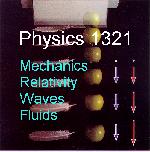 Grading Policy
Grading Policy
|
|
Grading PolicyThis memo details my philosophy of grading, not necessarily in logical order. Solutions ManualI am opposed to the use of the solutions manual as a reference source by graders. This policy evolved, of course, in an era when all graders were TA's studying for the comprehensive exams. Since some graders are not physics TAs, I suppose I can't be as strict. However, use of the solutions manual tends to produce three pathological outputs: First, the solutions manual is wrong as much as 5% of the time. Use of incorrect solutions is obviously poor pedagogy and unfair. It is the grader's responsibility to spot these cases if he or she uses the solution manual. Second, it has been my experience that graders who use the solutions manual tend to be rigid and intolerant when grading correct solutions arrived at by a valid but non-standard method. It is unfair and wrong to count a valid solution as incorrect just because it does not exactly replicate the method in the manual. Third, it has been my experience that graders who use the solutions manual sometimes insist that the students exactly duplicate the notation used by the author of the solutions manual. In addition to being patently silly, such an approach is abusive, unfair and wrong. If a grader can manage to avoid these three pitfalls, then use of the solutions manual is acceptable. Partial CreditProblems should be graded on a positive definite scale of ten points per problem (no negative numbers!). Partial credit should be given somewhat sparingly. Getting by totally on partial credit should not be a way to pass the course. In a ten point problem, the grader should give one or two points for a correct diagram, two-three points for starting the problem correctly, four-six points for correct derivation of the algebraic answer, and one point for a correct numerical answer (given ONLY if the algebraic answer is correct!). In multi-part problems, give one point for the diagram, and scale the rest proportionately. Algebra vs NumerologyStudents are required to reach an algebraic answer (a "formula" for the answer, if you will) before substituting any numbers. Students who substitute numbers at the start of a problem and avoid algebra should be given a zero for that problem, even if their numerical answer is correct. LegibilityThe grader may deduct up to the entire value of a problem for illegible or sloppy work.
The grader will note when this is done. At this point, you can go to the 1321 page,
the UH Space Physics Group
Web Site, or my personal Home Page. Edgar A. Bering, III , <eabering@uh.edu> |